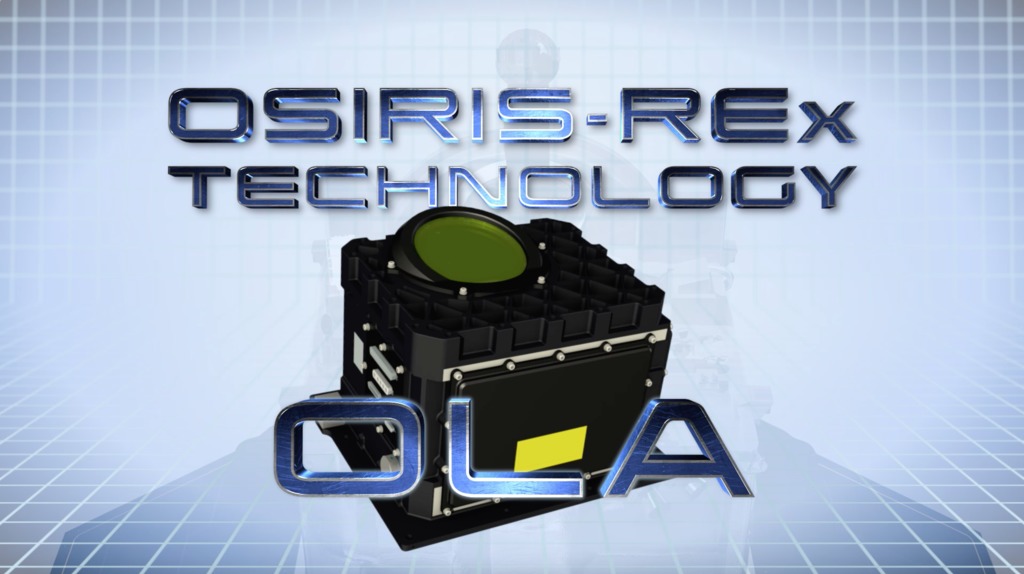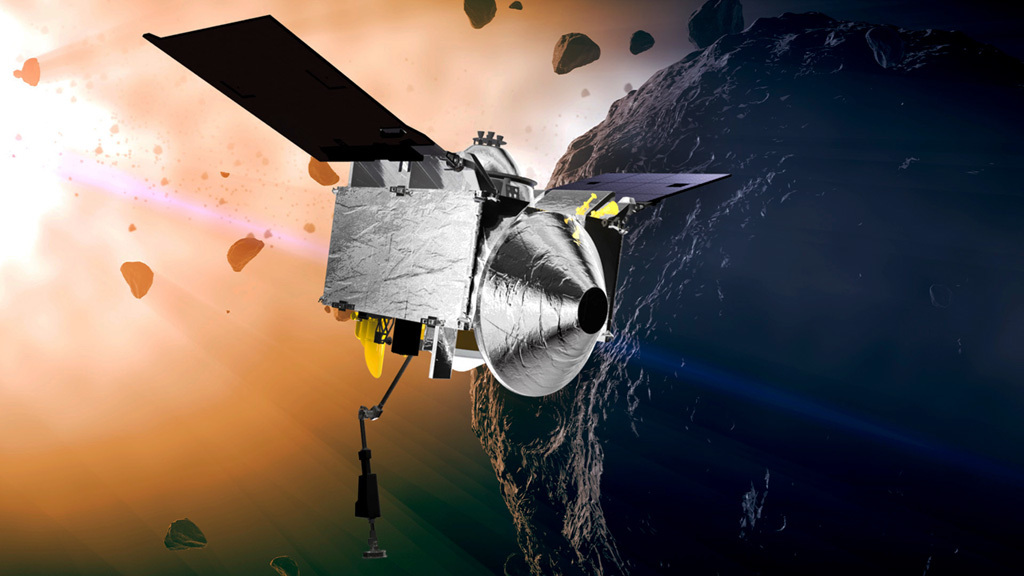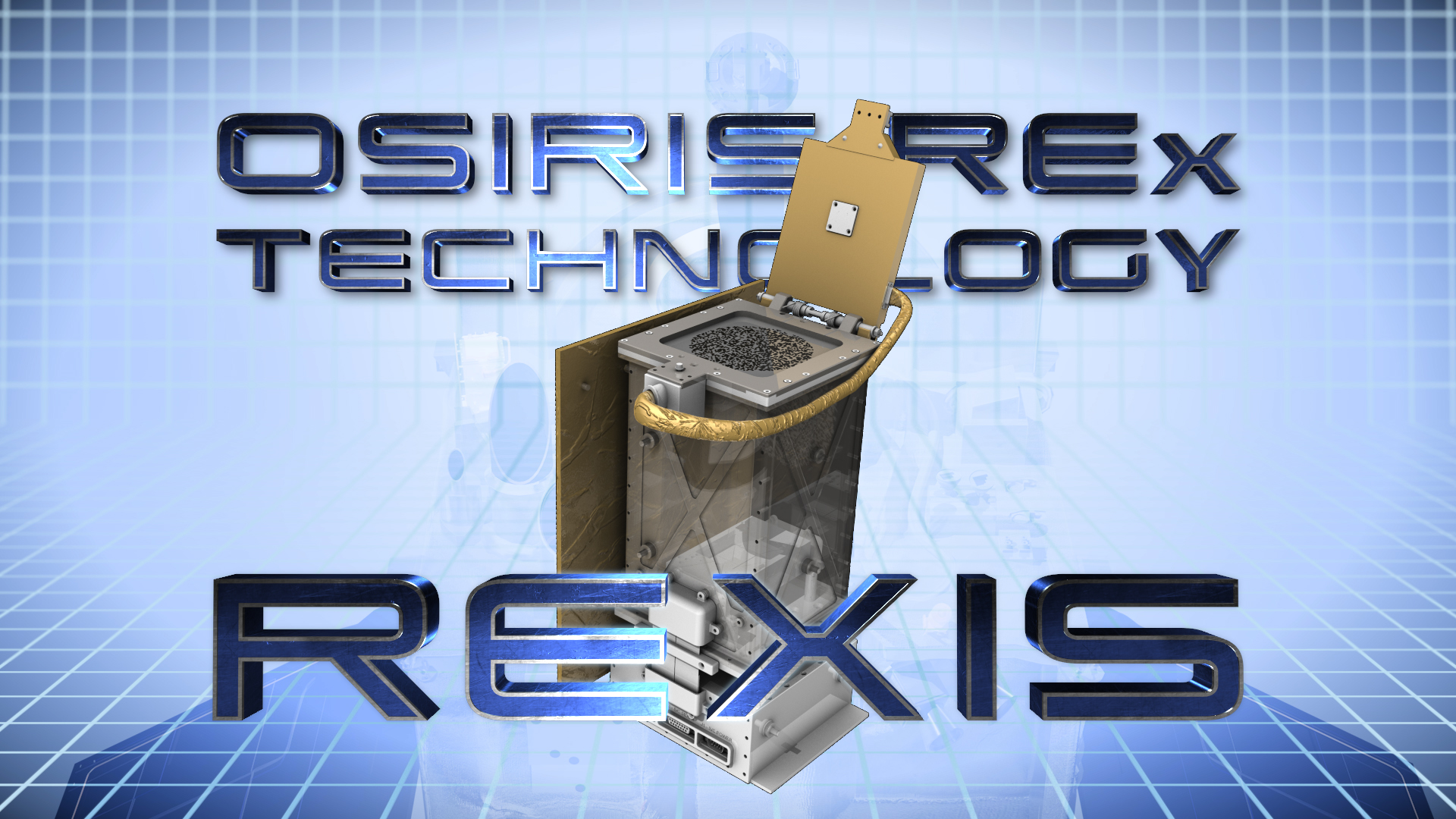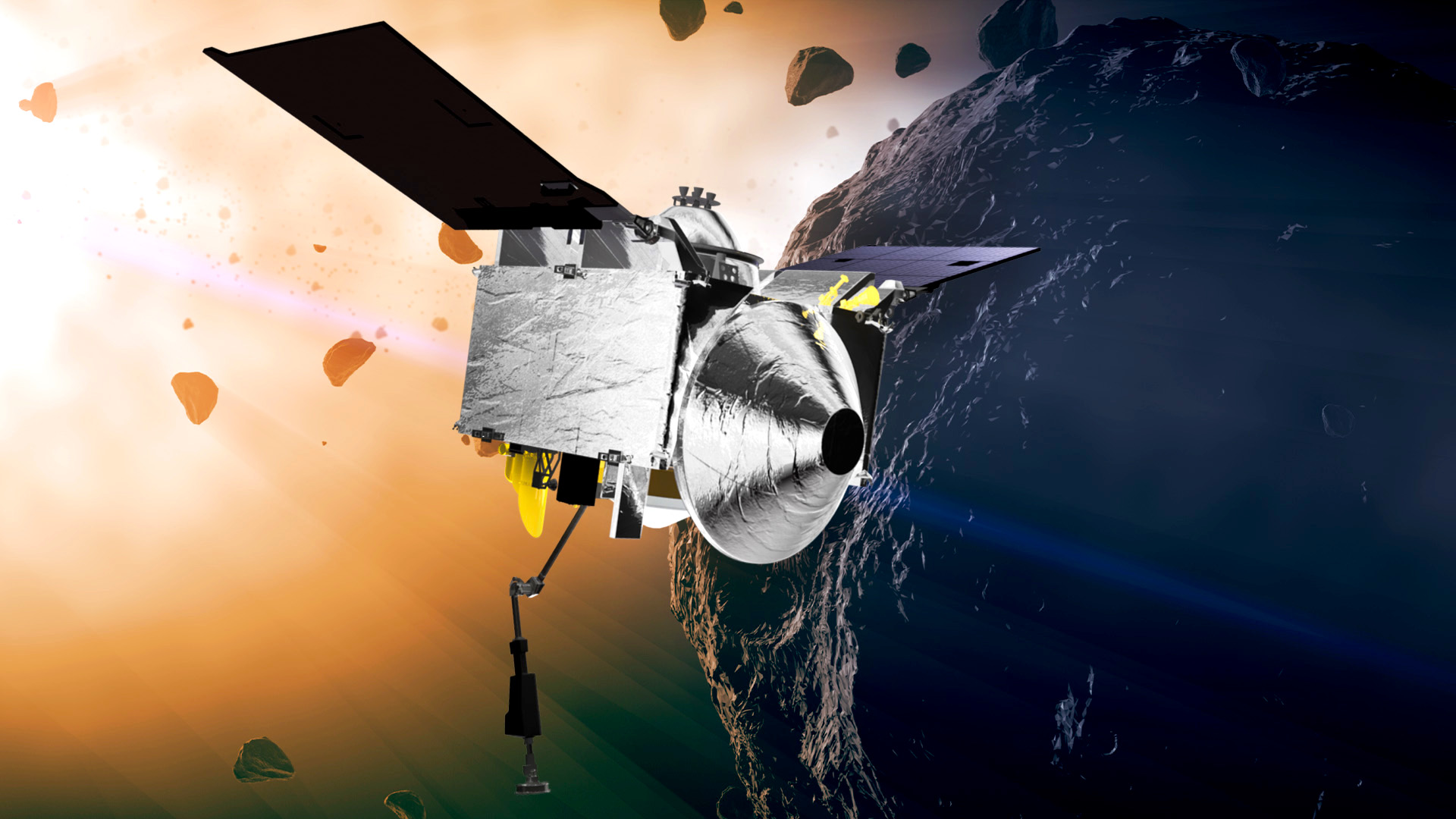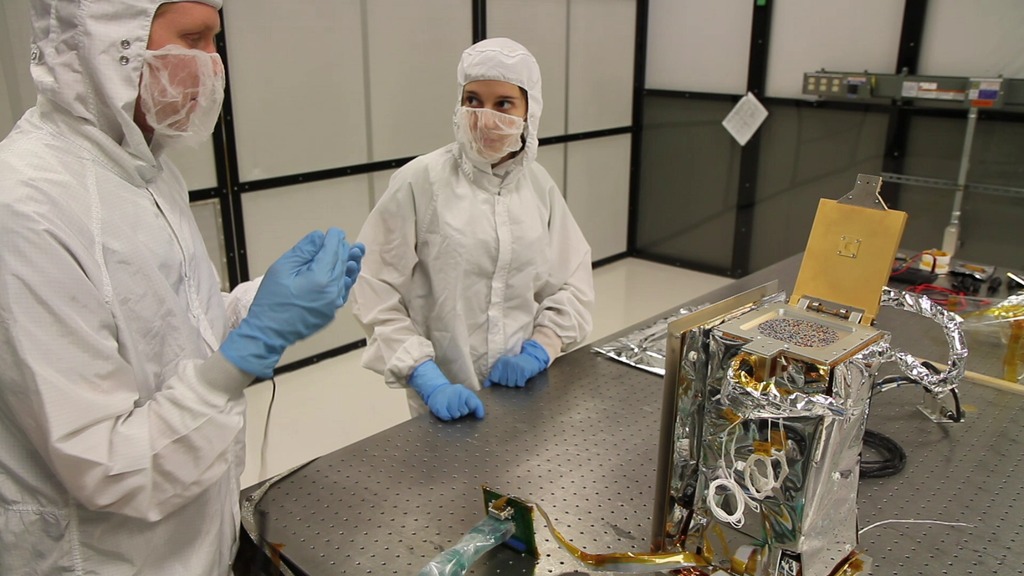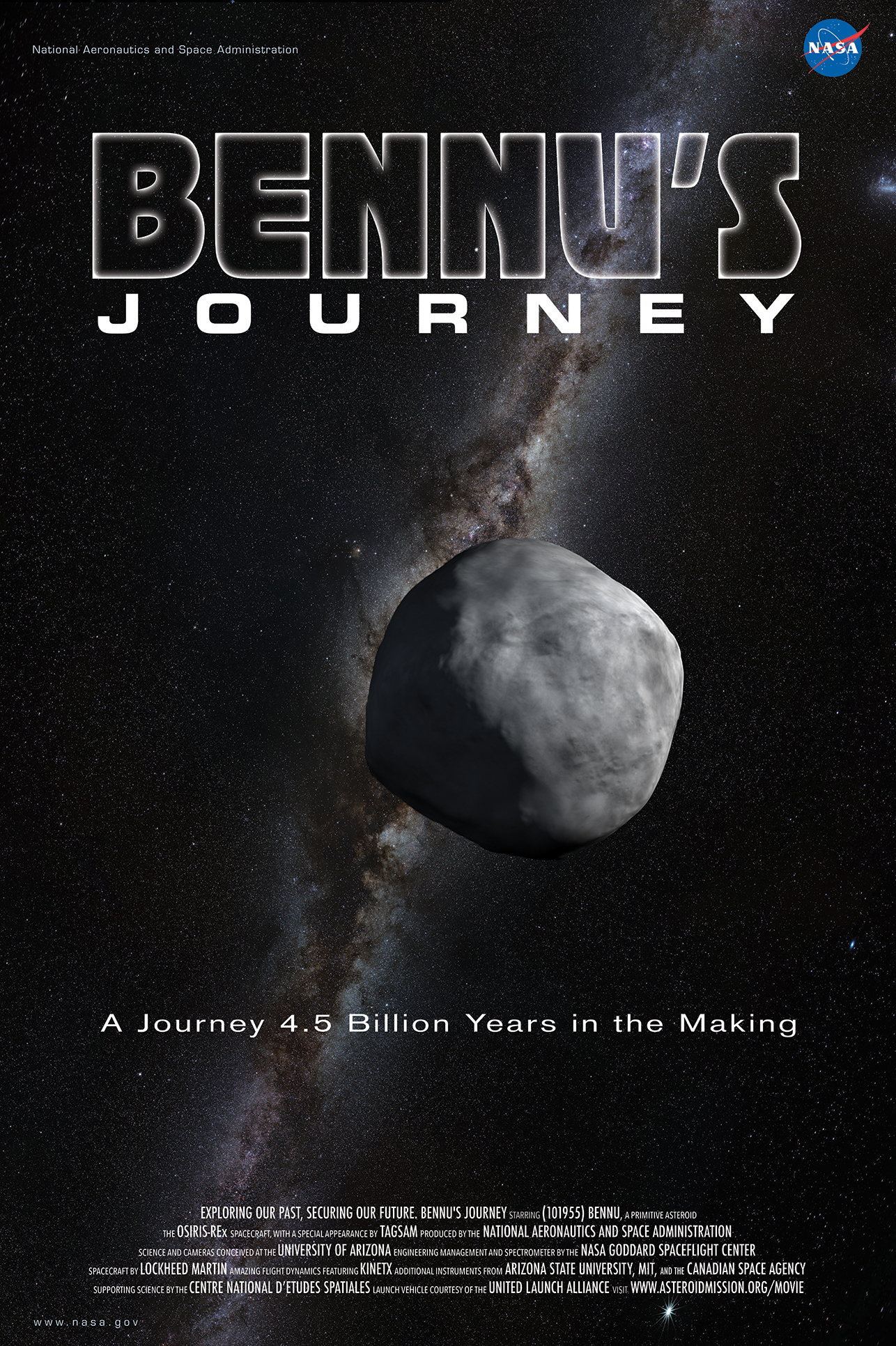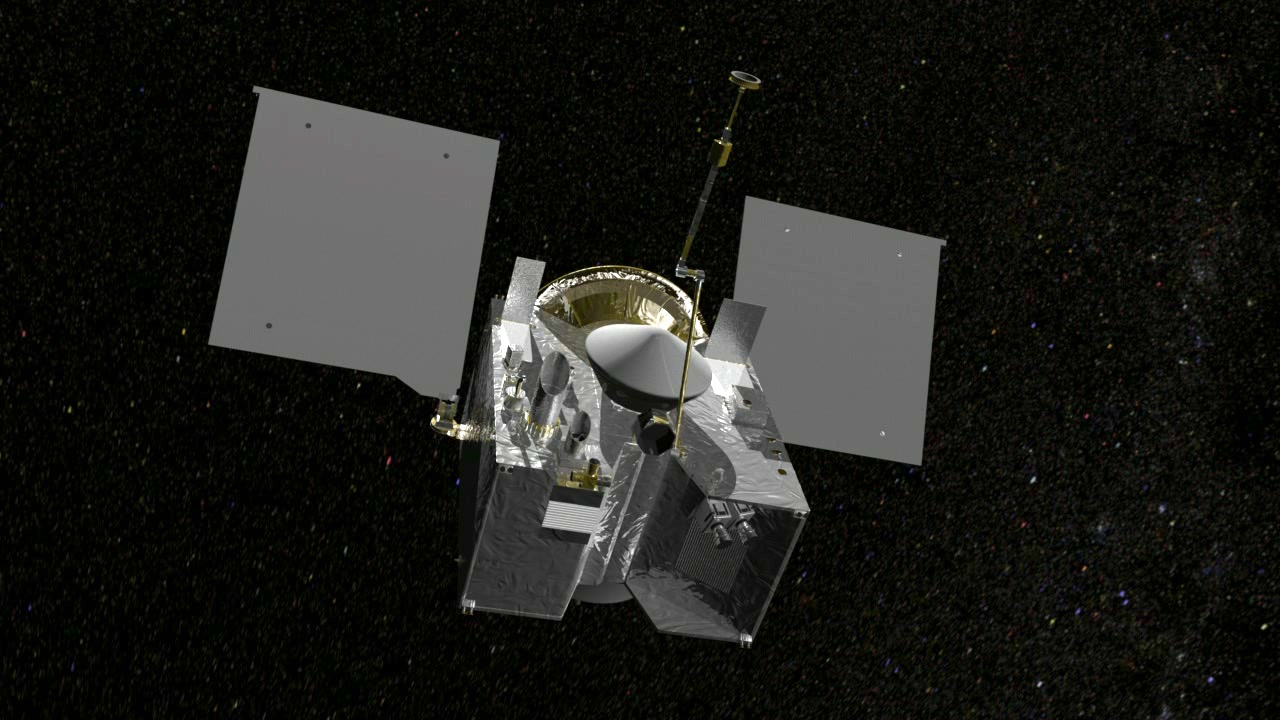OSIRIS-REx Technology: OVIRS
OSIRIS-REx will use its visible and infrared spectrometer (OVIRS) to study the chemical composition of Bennu, a near-Earth asteroid that may hold clues to the origins of life.
Watch this video on the NASA Goddard YouTube channel.
Complete transcript available.
NASA is sending the OSIRIS-REx spacecraft to explore near-Earth asteroid Bennu, a carbon-rich body that may contain clues to the origins of life. When OSIRIS-REx arrives at Bennu in 2018, it will spend over a year orbiting the asteroid and studying it with a suite of remote sensing instruments. The OSIRIS-REx Visible and Infrared Spectrometer, or OVIRS, will look at Bennu's spectral signature to detect organics and other minerals. After OVIRS and its fellow instruments have thoroughly surveyed Bennu, OSIRIS-REx will descend to the asteroid's surface, collect a sample, and return it to Earth in 2023.
Learn more about the OVIRS instrument.
Visit the OSIRIS-REx mission website.
Animated diagram of the OVIRS spectrometer, tracing the path of light through the instrument.
Credit: NASA/Goddard/CI Lab/Walt Feimer
The OVIRS instrument will allow OSIRIS-REx to hunt for organic molecules on asteroid Bennu.
Credit: NASA/Goddard/Dan Gallagher

OSIRIS-REx Visible and Infrared Spectrometer (OVIRS)
Credit: NASA/Goddard/Bill Hrybyk

Engineers at NASA's Goddard Space Flight Center put the finishing touches on OVIRS.
Credit: NASA/Goddard/Bill Hrybyk
For More Information
See NASA.gov
Credits
Please give credit for this item to:
NASA's Goddard Space Flight Center
-
Scientists
- Dennis Reuter (NASA/GSFC)
- Amy A. Simon (NASA/GSFC)
-
Interviewees
- Dennis Reuter (NASA/GSFC)
- Amy A. Simon (NASA/GSFC)
-
Producers
- Dan Gallagher (USRA)
- Katrina Jackson (USRA)
-
Narrator
- Dan Gallagher (USRA)
-
Editors
- Dan Gallagher (USRA)
- Katrina Jackson (USRA)
-
Animators
- Chris Meaney (HTSI)
- Walt Feimer (HTSI)
- Adriana Manrique Gutierrez (USRA)
- Lisa Poje (USRA)
- Michael Lentz (USRA)
-
Videographers
- Rob Andreoli (Advocates in Manpower Management, Inc.)
- John Caldwell (Advocates in Manpower Management, Inc.)
-
Project support
- Aaron E. Lepsch (ADNET Systems, Inc.)
Release date
This page was originally published on Monday, July 25, 2016.
This page was last updated on Wednesday, May 3, 2023 at 1:48 PM EDT.
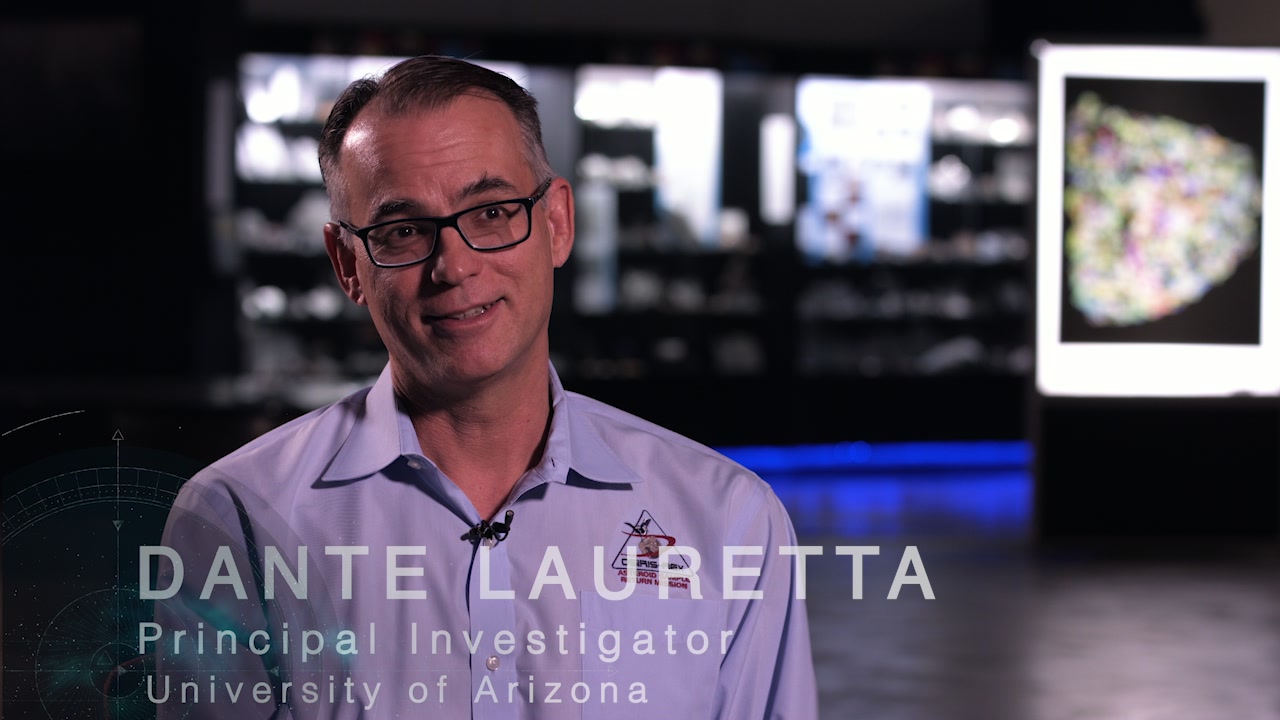
![The OSIRIS-REx camera suite will provide global maps and close-up images of asteroid Bennu, along with information about the carbon-rich asteroid's chemical makeup.This video is available for download in 4k resolution.Watch this video on the NASA Goddard YouTube channel.
Complete transcript available.Music Credits: "Ultimate Question" and "Victory Or Failure" by Guy & Zab Skornik [SACEM]](/vis/a010000/a012400/a012443/OCAMS_Preview_12443.jpg)
![To Bennu and BackMusic credits: "Defenders of the Earth" and "Finding Gaia" by Daniel Jay Nielson [ASCAP]; Atmosphere Music Ltd PRS; Volta Music; Killer Tracks Production Music](/vis/a010000/a012300/a012360/ToBennuAndBack_thumbnail.jpg)
